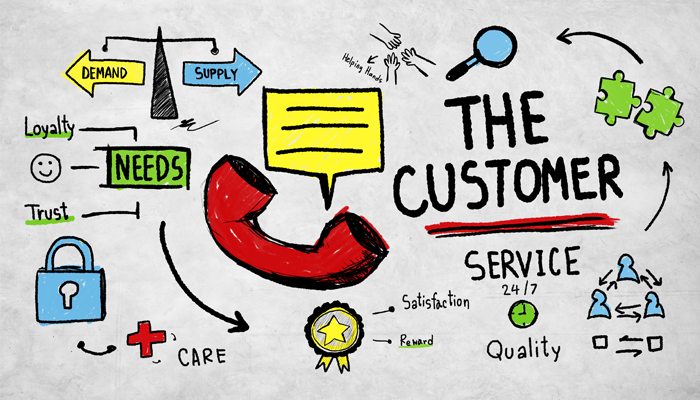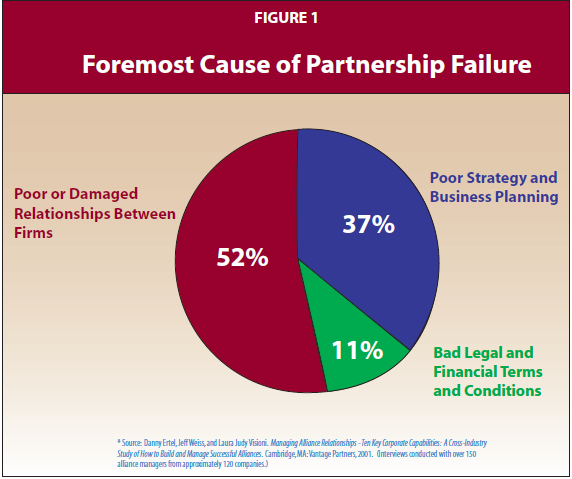Adam stood in the middle of the garden, enveloped in exquisite beauty. The world was there to delight him, succulent fruit, dignified trees, green meadows, sprinkling pool and species of all kinds. Yet he stood contemplating the nature, he felt certain loneliness and thus the Lord said
It is not good that man is alone. I shall make him a compatible helper.
With the creation of other species, both male and female sprang up the same time. If the beginning of the entire universe was chosen to be this way, how can business be any good without clients and a strong relationship with them, Right?

The productivity and enduring relationship not only provides value to clients that are consistent but also constructs a healthy connection in every business venture.
Though there are times when you get stuck in a rut with clients and the relationship starts to rot.
So, how do you change it?
Maybe with some strategies or maybe with the help of some plan. Well, whatever it may be here are some of the approaches which you can adapt to sweet up that sour relationship and add more productivity to a particular project.
But how can perfect client relationship get ruined?
Under perfect circumstances, organizations and big enterprises treat their clients right. However, there might be times when they are under pressure to sell more or retain those paying customers, chances are that they might deviate from their standards. Resulting in sorrowful client satisfaction.
With this context here are some of the actions which can kill a perfect build client relationship:
Saying yes to a client when you should not
There is no shame in accepting the fact that your organization can meet only a level of expectations and not beyond it. Taking up those clients who are not a good match is foolishness. If a particular organization knows that they going to hate dealing with a client or they might fail to meet their quality standards, the money is not worth the inevitable breakdown.
Overpromising
When there is a wide gap between expectations and reality - it results in disappointment. If you are selling software or a product for that matter, don’t promise the integration which will take a week or so and won’t work perfectly. Give those commitments that you know are humanly and technically feasible. Overpromising results in fears.
Not addressing the key details
When you are serving a client, it is necessary to include each and every detail about the project. You leaving details out by omission is one thing. If you leave out details intentionally, you will screw up relationships. Thus, address to each and every key detail.
Being unauthentic
If you are focusing only on yourself, what works for you and whatever you do then spending your time considering what's best for your team, company, or business partnership is a waste. Adopt an all-or-nothing attitude, acting however is needed to win favor, seal a deal, or make a sale, even if it means lying or misrepresenting your position is a call for a sour relationship.

Taking These Few Important Steps for an Enduring Relationship
We all know that a huge amount of time and effort is employed on acquiring clients, yet very few businesses spend the same energy nurturing the relationship. Here are some of the tips that would help you endure your client relationship.
Communication is the key
Clients depend on you to keep them informed. Having constant communication with them should be the top priorities. This includes updating them on various projects, as well as making them understand about any kind of bumps that you may encounter in the product delivering journey.
Information distribution
Don’t delay to share knowledge that might be useful to the clients, whether or not it benefits your organization in a way. The more value you present, the more a client attains to depend on you. There should not be a hesitation to share important and crucial data.
Integrity
If you are not honest to your client and vice-versa, no long term relationship survives. In addition to producing a product or service, your client requires you to show a chief responsibility towards all the dealings. Nowadays clients are really intelligent, they understand when they are being deceived or misled. Speaking a “ white lie” about why you failed can ruin your reputation. And without a reputation in terms of integrity, you can fail to cultivate the kind of long-term relationships that your business stands on.
Encourage multi-player team involvement
The success of any project depends on the contribution of every member of the team. Encouraging multi-player team with the involvement of the dev team can bring laurels to your project. This way the team members have a sense of ownership in a group project and they believe that their contributions are valued. They feel motivated to share their best work.
Goals
There might be times when you would feel that you and your client are not on the same page. You have your own objective and your client has there's. The solution to this common issue is to set mutual goals.
And as soon as you start your new project and get engaged and committed to the deadlines, you help the client with vital product or services that might not be available in time to meet his or her needs. Set mutual goals from the very beginning to avoid any kind of friction later in the future.
Work for a strong partnership
If you are building a relationship in all the appropriate ways and of course providing the products and services to your client needs, you can operate on developing a partnership with the client, something that is ahead of the project development.
A client who determines that the organization that is serving them is in it for the long haul and that it motivates to help them succeed soon starts to view them as more than just a vendor or supplier. You become a partner in their enterprise and someone they grow to value today, tomorrow and in the years to come
Looking into the performance
Re-examine the cost
If you have been working with a particular customer for a long time, re-examine what it really costs you to do so. It would not be feasible to cut your price if it becomes cheaper to serve them.
Perceiving the Product
Instead of thinking about what it is or what it does, you should infuse how it makes them feel. Even if you sell software, your software may relieve the stressful feeling of trying to get work done in a limited amount of time. It may make them feel confident in doing the job right.
Modify the strategy of budget
Modify what you sell from a capital cost into an expense if your customer’s CEO won’t approve your product. Often, capital spending is prohibited but monthly expenses continue to be budgeted.
Finding an efficient distributor
Sell your wares through a distributor if customers start to need smaller quantities or more service. Perhaps your service has declined as you pursued larger customers. If so, get a third party to sell and service your customer properly. You sure don’t need to make as much if you are doing less.
Selling your Service
If they won’t buy your service by the unit, sell it by the hour or the result. So many times buyers are told to cut costs by cutting inventory.
Grant with a warranty if your product is at fault
If your product or service was deficient, offer some kind of insurance to assure your customer it won’t be a problem next time.
Managing the departments
The reasons customers buy your from you can change over time. A purchasing department can make decisions until its company has legal or customer problems, at which time their finance or marketing departments may now have the final say.
Managing projects with the help of various methods
- Waterfall: One of the more traditional project management methodologies, Waterfall is a linear, sequential design approach where progress flows downwards in one direction like a waterfall.
- Agile development: Agile is best suited for projects that are iterative and incremental. It’s a type of process where demands and solutions evolve through the collaborative effort of self-organizing and cross-functional teams and their customers
- Scrum: Scrum is comprised of five values: commitment, courage, focus, openness, and respect. Its goal is to develop, deliver, and sustain complex products through collaboration, accountability, and iterative progress.
- Kanban: Kanban is another popular Agile framework that, similar to Scrum, focuses on early releases with collaborative and self-managing teams.
- Six Sigma: It aims to improve quality by reducing the number of errors in a process by identifying what is not working and then removing it from the process.
Case Studies
Ivey Business Journal
A three-year cross-industry study by Ivey business journal explained how poor business strategy, inappropriate communication or damaged working relationships between partners account for 94 percent of all broken and failed alliances. On their own, poor or damaged working relationships account for 52 percent of all broken alliances.
There are several reasons due to which an alliance is broken. Issues like impersonal problems, failure of team members communicating, high attrition rates, and most importantly the failure to reach a milestone.
When an alliance is recognized as broken, there are many critical tasks to perform and many separate decisions to be made. Partners require to diagnose why the alliance has broken down, examine and interpret the existing obstacles, disputes or tensions, and create a specific procedure to master these problems. They must furnish themselves to uphold a long-term relationship.
To relaunch your relationship with your client a three-step process can be followed:
- Audit the relationship diagnosing the root causes
- The partnership can succeed only if both organizations are fully persuaded that the alliance is the most effective means to meet their goals.
- Conduct relationship planning build a joint contract and deal understanding

OEM Profitability and Supplier Relations
OEM Profitability and Supplier Relations - which is based in part on data gathered over the past 13 years from the annual Working Relations Index Study published by consultancy Planning Perspectives - found the better the relationship an automotive manufacturer has with its suppliers, the greater its profits are.
It explained the relationship “quantifies the economic value of suppliers’. This includes a supplier sharing new technology, providing the best team to support to the manufacturer, and providing support that goes beyond the supplier's contractual obligation.
The report added the research “establishes the fact that the economic value of the suppliers’ non-price benefits can greatly exceed the economic benefit realized from suppliers’ price concessions”. On average, this can be up to four to five times greater, according to the research.
Conclusion
To get customer loyalty in today’s rapidly changing competitive world, companies need to rethink.
- How do they engage customers?
- Do they have the appetite required to build loyal relationships?
- Is it even the right strategy for them in the first place?
Determine what your business and shareholders need first. If it’s short-term financial gains, then customer loyalty should not be a stated goal. Client seeks relationships, with their vendor. They want a place to be heard, a place to be appreciated and a place to connect.
At Opensense Labs, we use social technologies and services that allow us to take relationships with customers to higher levels. Connecting with customers’ personal values helps in placing ahead of the competition in winning the hearts and minds of your customers.
Ping us now at hello@opensenselabs.com now.


